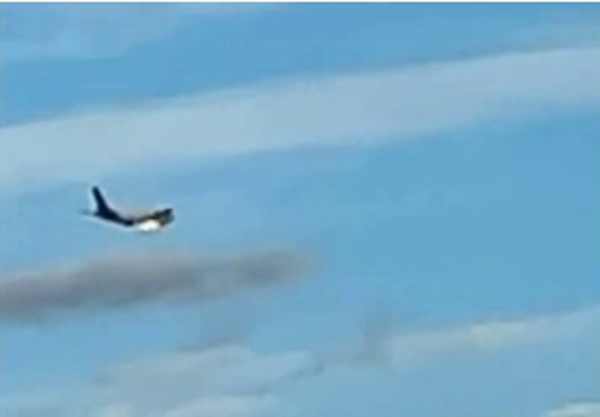A FedEx cargo plane departing from Newark Liberty International Airport in New Jersey encountered a terrifying in-flight emergency on the morning of March 1, 2025. The Boeing 767-3S2F, a dedicated freighter aircraft operated by FedEx, took off from Newark shortly before 8:00 a.m. However, just moments into the flight, the aircraft’s right engine erupted into flames, forcing the crew to declare an emergency and execute an immediate return to the airport.
According to initial reports, the fire was triggered by a bird strike, which occurs when a bird collides with an aircraft during flight. In this case, a bird was ingested into the engine, causing a rapid sequence of mechanical failures that led to visible flames and smoke trailing from the right engine. The crew, trained to handle emergencies of this nature, followed established emergency protocols and promptly requested priority landing clearance.
Air traffic controllers at Newark worked swiftly to clear the airspace for the aircraft’s urgent return. Video footage captured by eyewitnesses shows the plane descending toward the runway with flames and smoke pouring from the engine. Emergency response teams were already on standby at the airport, preparing to handle any potential escalation, including the possibility of a full-scale aircraft evacuation or firefighting operation upon touchdown.
Despite the severity of the situation, the aircraft safely landed at approximately 8:07 a.m., just nine minutes after takeoff. There were no injuries reported among the flight crew, who demonstrated professionalism under intense pressure. Emergency personnel quickly approached the aircraft after landing to extinguish the flames and assess the damage to the engine.
FedEx has not yet issued a detailed public statement about the incident, but both the Federal Aviation Administration (FAA) and the National Transportation Safety Board (NTSB) are expected to launch a thorough investigation. Investigators will examine flight data recordings, engine components, and maintenance logs to determine if there were any underlying mechanical issues that contributed to the fire, aside from the bird strike.
Bird strikes remain a persistent threat to aviation safety, particularly during takeoff and landing when aircraft operate at lower altitudes. Airports located near wetlands, bodies of water, or areas with dense bird populations face heightened risks. Wildlife management programs at major airports, including Newark Liberty, employ various techniques such as radar detection, sound deterrents, and habitat modification to minimize these risks. However, despite advanced mitigation efforts, no airport can fully eliminate the possibility of bird strikes.
This incident serves as a reminder of the complex challenges involved in modern air cargo operations. Cargo flights, unlike passenger services, often operate on tight schedules with high-value freight on board. The safety of crew and cargo depends not only on well-maintained aircraft but also on effective risk management practices and real-time decision-making in response to unexpected events.
FedEx, as one of the largest cargo operators in the world, has extensive experience handling such emergencies, and its crew training programs emphasize rapid response to mechanical failures, fire, and other inflight hazards. As investigators gather more information, the broader aviation community will likely study this incident to further improve safety procedures related to bird strike response, emergency landings, and engine fire containment.
For now, this event underscores the resilience and preparedness required in air transportation, particularly for freight carriers operating on complex global routes. While the incident resulted in no injuries or loss of cargo, it highlights the unpredictable nature of flight and the importance of constant vigilance and safety innovation across the aviation industry.





